


Motion Anatomy
The motions of bending and twisting are complex because there a lot of moving parts.
Each bone is contributing to the motion and requires each tissue component to participate. Any loss of tissue integrity would limit performance and result in compensation of other tissue components as well as other parts of the body.
There are four directions of spinal movement. Actual everyday motion is a combination of all four. There is a normal range of motion for each direction.
Flexion 60
Extension 20
Sidebend 30
Rotation 60
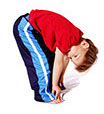
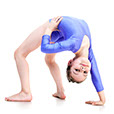
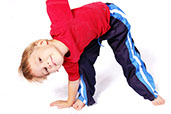

Mechanics of Flexion
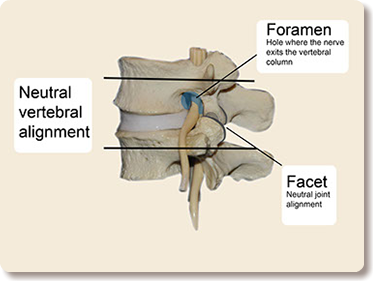
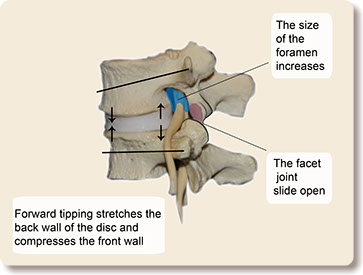
Forward flexion occurs by one bone tipping forward on the one below, compressing the front wall of the disc while stretching the back wall of the disc. Both of the facet joints are opening and the hole where the nerves come out gets bigger. The spine bends forward until the joints have opened as far as they can, and the ligaments become stretched to their full capacity. The erector spinae controls the lowering of the spine with gravity and works to lift it back up with the support of the abdominals and obliques.
Mechanics of Extension
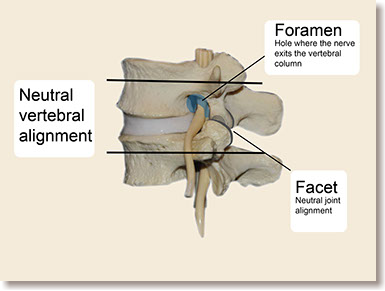
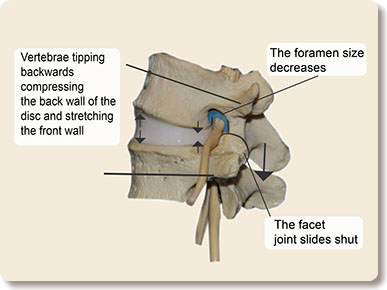
The opposite happens when we bend backwards. The total motion of extension or backward bending is 20 degrees.
The top bone tips back on the bone below compressing the back wall of the disc and stretching the front wall. The facets joints are compressing shut, and the hole where the nerve comes out is getting smaller. The compression of the joints along with the stretch of the ligaments define the stopping point of extension. The abdominals control the trunk extension and then pull the ribcage back to neutral.
Mechanics of Sidebend
Mechanics of Rotation
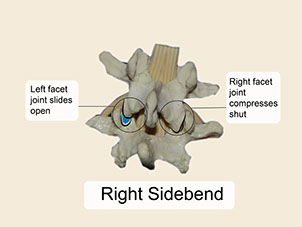
One bone tips to the side on top of another bone compressing that side of the disc and stretching the opposite wall. One facet joint slides open while the other compresses shut.
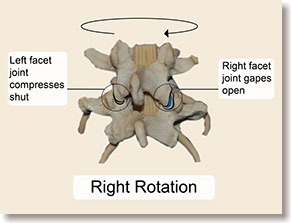
As the bone twists, it winds up the annular fibers in a spiral-like motion with one facet gapping open and the other compressing shut.
There are several possibilities:
-Pain that occurs with forward motion might be the result of a muscle strain or an injured ligament. Both become more painful when placed under greater stress.
-The back wall of the disc may have a tear so it will hurt more with forward bending.
Pain that is relieved by forward flexion might be related to a relief of pressure of the structures in the foramen or hole where the nerve comes out as well as reduced compression in the facet joint.
Why do I hurt when I bend forward?
The contents of BackPainExplained web site including the text, graphics, images, and other material are for informational purposes only. The content of this web site is not intended to be a substitute for professional medical advice, diagnosis, or treatment. Always seek advice of your physician or other qualified health professional with questions you may have regarding a medical condition. Do not delay seeking medical advice or disregard professional treatment advice because of something that you have read on BackPainExplained.
Call your physician or 911 if you think that you have a medical emergency. Reliance on any information within BackPainExplained web site is solely at your own risk.